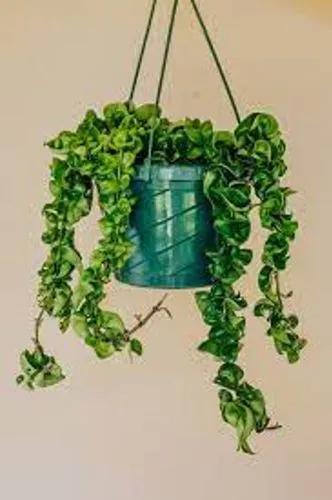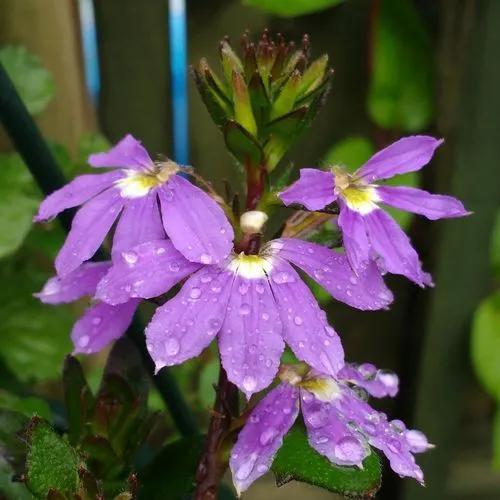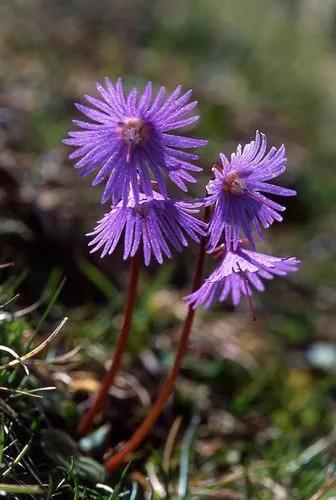Planting trailing vines that produce showy flowers and refreshing fruits is a wise way of decorating a spacious indoor or outdoor space. So, here's another interesting plant to add to your tropical garden.
Passion Fruit Care
passiflora edulis
Other names: Grenadelle, Grenadine, Passionflower, Purple Granadilla, Purple Passion Fruit



Passiflora edulis, popularly known as the Passion Fruit, is a tendril-bearing vine growing up to 49 feet (15 m) long. It's native to Brazil, Paraguay, and Northeastern Argentina and can grow in tropical and subtropical places worldwide. The plant grows as a short-lived perennial with an average lifespan of 5 to 7 years.
One interesting feature of the Passiflora edulis is its flower. The astounding beauty of its blooms is indeed worthy of the name "passion." Each flower has a size of 2.5 to 3 inches (6.3 to 7.5 cm) and has a dominant white color with purple-based filaments and a fragrant smell. These showy flowers are very attractive to pollinators but last only a day.
The plant produces ovoid-shaped fruits that contain plenty of tiny seeds coated by an orange pulp. Passion fruits are used in food products such as beverages, jellies, cakes, pastries, and salads.
How to Care for the Plant

Water

The plant needs a moderate amount of water to thrive. If planted in the ground, ensure the place has good drainage to avoid wet feet. You may have to water more for potted plants because they have limited soil that holds moisture. Just remember to drain excess water from the pot. We suggest you err on the dry side if you are unsure whether to water.

Pruning

This vine has a fast growth rate, and you may be tempted to prune some branches after a few months of starting the plant. However, it's highly recommended that you not prune the vine but train them in the trellis so the leaves will receive ample light. In the second year, pruning will be necessary to develop a strong framework. Cut the less vigorous branches and retain only one or two of the strongest vines. Do the pruning very early in spring.

Fertilizer

Before planting, apply organic matter such as compost or well-rotted manure in the soil. In spring, apply 2 to 4 oz (300 to 500 g) of NPK fertilizer at a ratio of 10-5-20 per plant. Spread it over the entire root system, and water the plant deeply. Repeat the application of fertilizer after four weeks in the summer season.

Sunlight

It requires full sun to grow and become productive. Plant it in an area exposed to at least 6 to 8 hours of full sun every day.

Soil

The plant would feel the best in fertile, loamy, and well-draining soil.

Propagation

You can propagate Passion Fruit using seeds and stem cuttings. Some gardeners do grafting and air layering. Sowing seeds is the easiest mode of propagation, so we recommend this method for beginners.

Temperature

A Passion Fruit needs a warm environment as a species originating from tropical and subtropical areas. The ideal temperature for optimal growth ranges between 68 to 82°F (20 to 28°C). Passion fruit will grow well if planted in locations within USDA hardiness zones 9b and above.

Container

You can grow Passion Fruit in a container, but you must put it outdoors or near a structure where it can cling because the plant is a vine, and it needs a big space to climb. Choose a sturdy pot at least 20 inches (50 cm) in depth and width.

Fun fact

The term "passion" in the fruit's name is associated with the Passion of Christ because the flower's morphology was associated with the crucifixion of Jesus. Early missionaries in Brazil used the illustration of passion fruit flowers to convert locals to Christianity.

Popularity

2,273 people already have this plant 239 people have added this plant to their wishlists
Discover more plants with the list below
Popular articles






